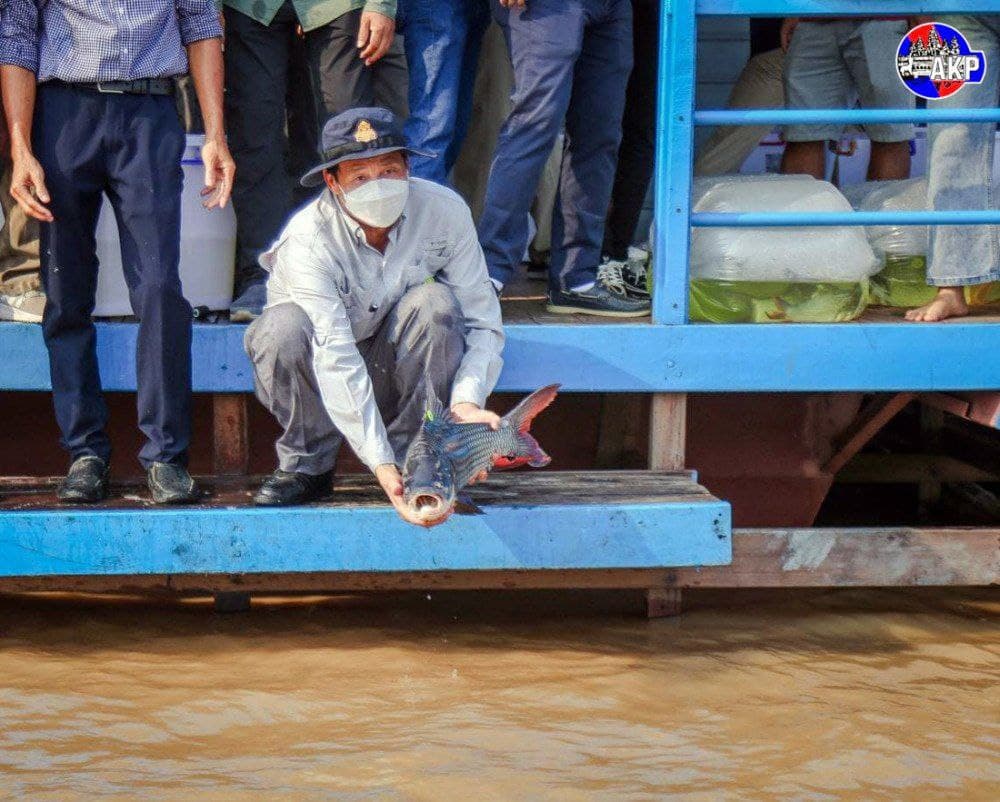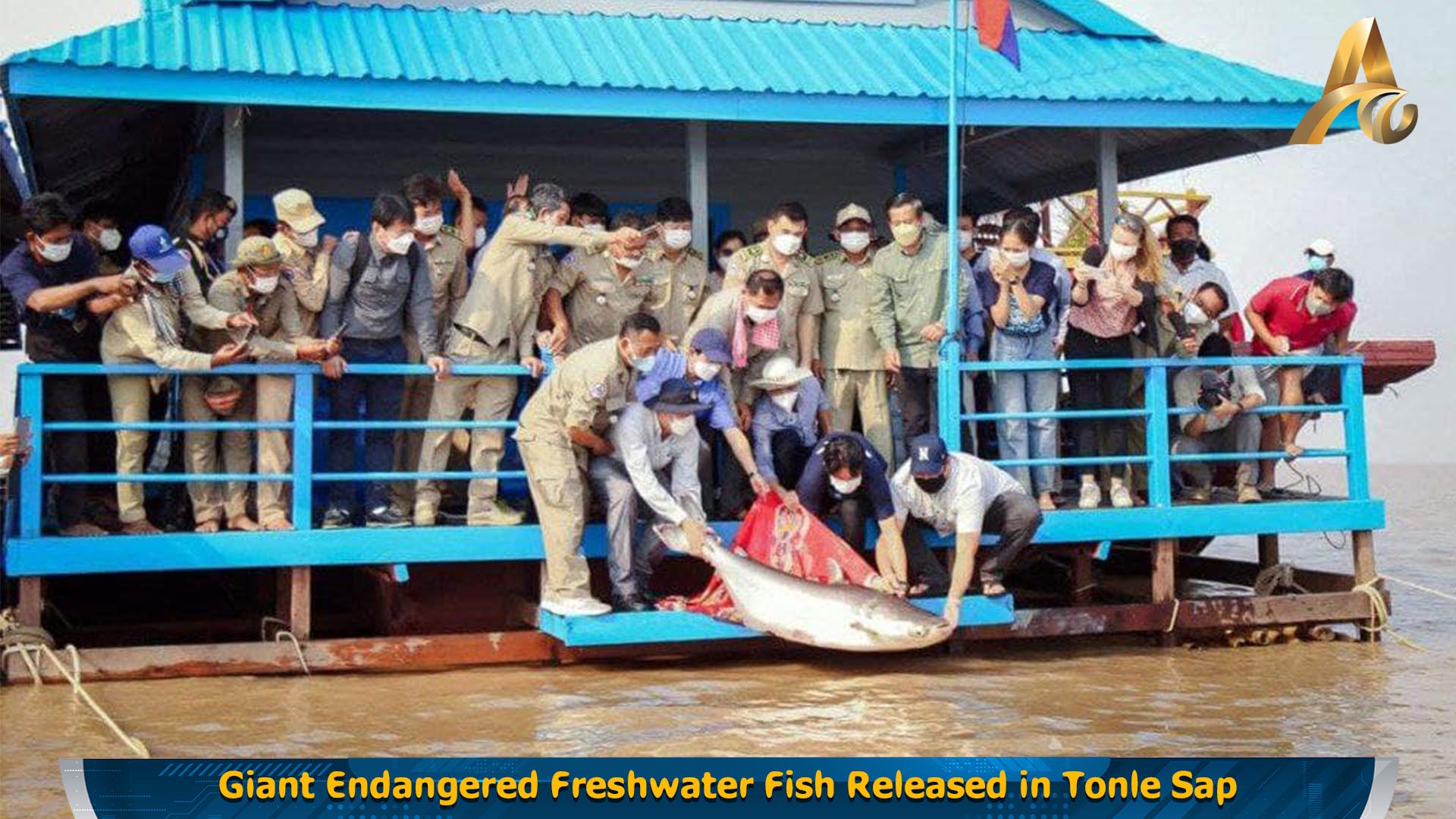SIEM REAP: An international team of scientists and fishery professionals have been working to save some of the world’s most endangered fish found in Cambodia, and over the weekend of 4-6 March, released an array of the world’s largest and most endangered freshwater fish species into the Tonle Sap Lake, in an effort to restore these fish populations and protect the lake’s aquatic biodiversity.
The fish species that were released into the lake include the critically endangered Mekong catfish, which is also the current world-record holder for being the world’s largest freshwater fish at 293 kg, the striped river catfish, which was once a staple source of food in the region, and the giant barb, which is a critically endangered species of carp and Cambodia’s national fish.
The lead biologist for the USAID-funded Wonders of the Mekong Project, Dr. Zeb Hogan, from the University of Nevada, has stressed the importance of releasing and reintroducing these fish into the lake, in an effort to restore their populations. He said, “Fish reserves have been shown to be an effective tool to protect aquatic biodiversity and boost fish biomass. It’s one action, of many that are needed, to bring these species back from the brink of extinction.”
Under this project, more than 1,000 giant freshwater fish are to be released into a government-operated fish reserve in the Tonle Sap Lake, located near the city of Siem Reap. The fish being released mostly comprise of juveniles ranging in size from 30cm to 1.6 m long. These fish were reared by the Cambodian Fisheries Administration in partnership with the Wonders of the Mekong project, and all released fish are tagged so that researchers can have the opportunity to study the survival, growth, and movement of these aquatic animals.
According to fish ecologist and Dean of the Faculty of Fisheries Science at the Royal University of Agriculture, Dr. Ngor Peng Bun, the release and continued tracking of these fish will be critical in helping to “inform future conservation practices” and help scientists “understand whether such methods are effective in supporting the restoration of these species’ wild populations.”
The Tonle Sap is the largest lake in Southeast Asia and is home to around 300 species of fish. The lake has been critical for serving as a nursery ground for endangered giant freshwater fish and many other fish populations in the Mekong River basin, but overfishing, the building of dams and more frequently occurring droughts have put these fish under great threat over the years.
As a result, the Royal Government has established fish sanctuaries and community conservation areas to form one of the world’s largest network of aquatic conservation zones in the Tonle Sap, all in an effort to combat threats to fish populations and preserve the lake’s aquatic biodiversity.
More releases of endangered giant freshwater fish species are expected to take place in the Tonle Sap. Researchers have expressed optimism that such actions and sustained commitment to protecting Cambodia’s giant freshwater fish populations will lead to positive conservation results.























